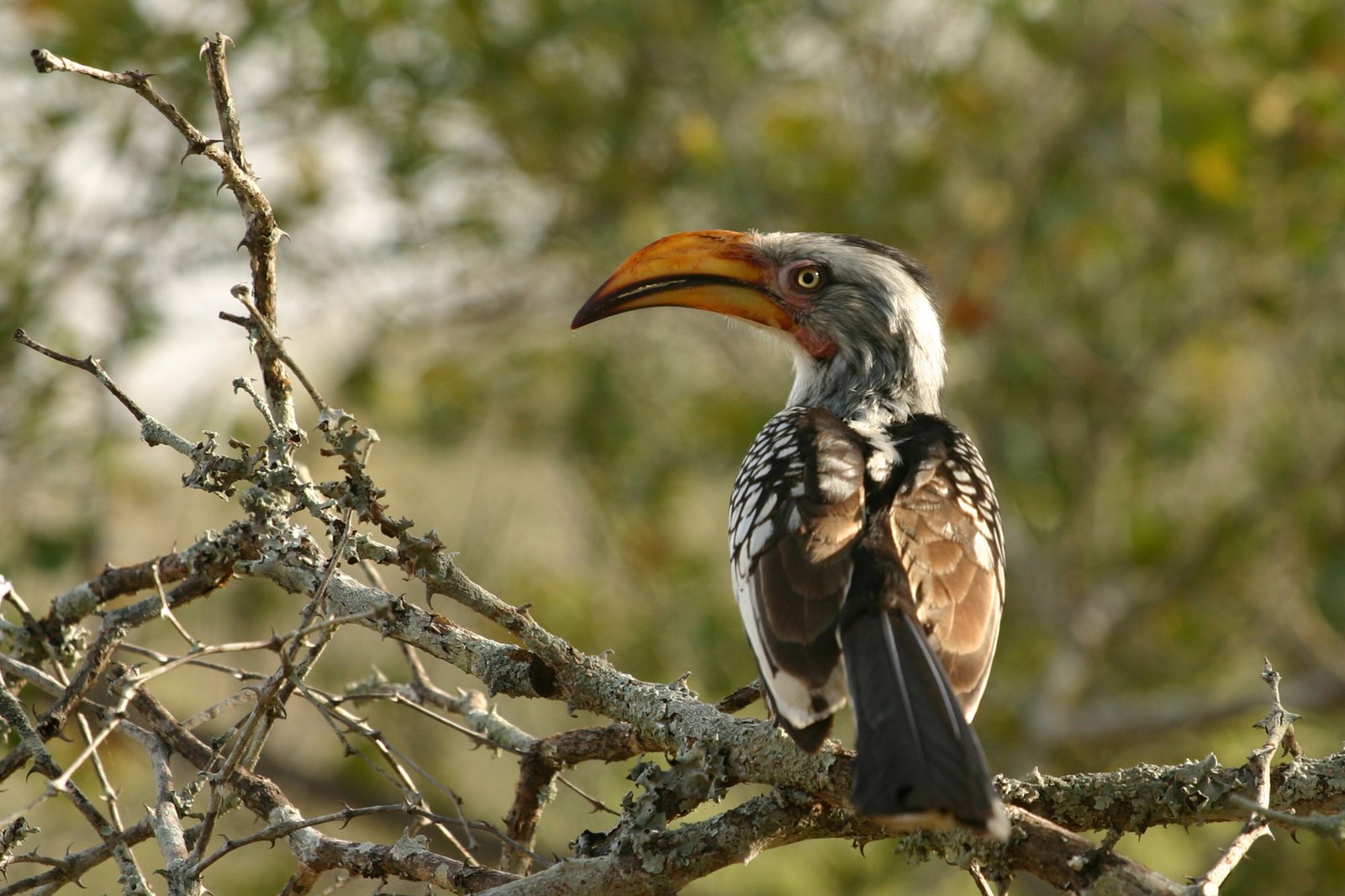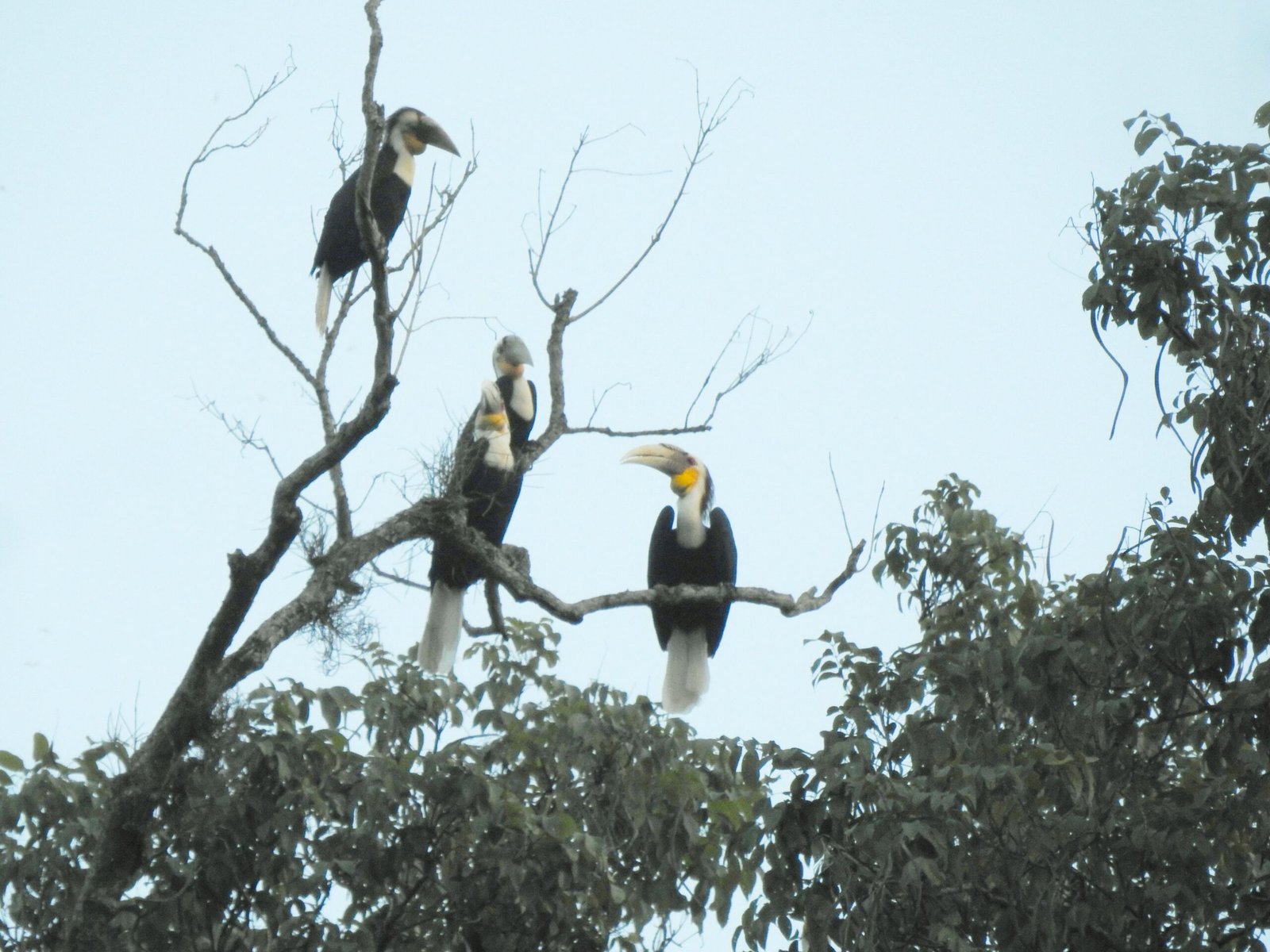Imagine stepping out to your balcony for a quiet morning coffee, only to be greeted by the piercing call of a hornbill perched on your railing, surveying the cityscape with an eye as sharp as its beak. Surprising? Perhaps even a little annoying? Yet, to the hornbill, your high-rise haven is an irresistible oasis amid the concrete jungle. What is it about your condo balcony that draws these enchanting, prehistoric-looking birds to urban heights, and why do some residents wish they’d keep their distance? The answer is a captivating mix of animal instinct, city ecology, and the fascinating adaptability of nature.
Urban Skies: Hornbills Take to the Heights
Hornbills have adapted impressively to life above the treetops, making the most of city skylines that mimic their natural habitats. The tall buildings and balconies in urban areas resemble the towering trees of their native forests, offering perfect perches for these birds. From their vantage points, hornbills can scout for food, spot potential mates, and keep an eye on predators—even if those threats are now more likely to be curious humans than hungry snakes. Their comfort with heights is deeply rooted in their evolution, as hornbills have always favored high nesting spots to keep their eggs safe. The city’s vertical structures are like a ready-made forest canopy, only with better views and fewer climbing vines.
The Irresistible Buffet: Food Sources on Balconies
A hornbill’s diet is surprisingly varied, and urban environments offer a smorgasbord of tempting treats. Fruit left out for decoration, crumbs from last night’s dinner, or even pet food set out for furry companions can all attract these opportunistic feeders. Some city dwellers intentionally provide food to attract wildlife, not realizing that hornbills have an excellent memory for free meals. Once they’ve found a reliable food source, hornbills will return, sometimes bringing their mates or young along. The balcony thus transforms into a lively dining hall, with the birds’ powerful beaks expertly cracking open fruits or scooping up small morsels left behind.
Safe Havens Above the Fray
Safety is a top priority for hornbills, especially during breeding season. In the wild, these birds seek out high tree cavities to nest and rear their chicks, safe from ground-based predators. Urban balconies, especially those with overhangs or dense plant pots, can mimic these safe spaces. With fewer natural predators in the city, hornbills feel secure enough to explore new nesting sites, and your balcony’s privacy and elevation make it all the more appealing. Some hornbills have even been observed attempting to nest in potted plants or window planters, adapting their age-old instincts to modern environments.
Curiosity and Intelligence: The Hornbill’s Urban Toolkit

Hornbills are more than just pretty faces with impressive beaks—they’re highly intelligent and curious creatures. Their large brains relative to body size help them solve problems, remember food locations, and explore unfamiliar environments with confidence. In a city, this intelligence translates to boldness: hornbills are not easily scared off by unfamiliar sights and sounds. They may investigate shiny objects, peck at windowpanes, or even try to interact with residents through the glass. This curiosity is both a survival tool and a reason why they’re so drawn to human spaces.
Balcony Gardens: An Accidental Hornbill Magnet

Many city dwellers love to fill their balconies with lush plants and flowering shrubs. To a hornbill, this is a miniature jungle packed with hidden treasures. Fruiting plants like figs, papayas, or bananas are especially attractive, but even non-fruiting greenery can shelter insects and small reptiles—additional snacks for these omnivorous birds. The scent of ripe fruit or blooming flowers can carry on the wind, acting like a dinner bell for hornbills soaring above. It’s no wonder they drop in for a visit, sometimes leaving a trail of nibbled leaves or half-eaten fruit in their wake.
Social Signals: Hornbills and the City Soundscape

Hornbills are famously vocal, using loud calls to communicate with each other across vast distances. In the dense acoustic landscape of a city, their calls can echo off buildings, making them even more noticeable. These calls serve multiple purposes: attracting mates, warning rivals, or calling family members to food. Sometimes, hornbills mistake the echoes as responses from other hornbills, leading to even more persistent calling. For residents, these raucous calls can be startling or even frustrating, especially at dawn when the city is otherwise quiet.
Seasonal Surprises: When Hornbills Flock to Balconies

Hornbills’ visits to balconies often increase during certain times of the year, especially during fruiting seasons or when young birds are learning to forage. After heavy rains, urban trees and gardens burst with new fruits and insects, drawing hornbills into the city in greater numbers. Breeding season also plays a role, as parents search for safe nesting sites and easy food sources for their chicks. Condo dwellers may notice a sudden spike in hornbill activity, turning their balconies into bustling hubs of avian life seemingly overnight.
Conflicts on the Balcony: When Wildlife and Humans Collide
Not everyone welcomes these unexpected guests. Hornbills can be noisy, messy, and sometimes destructive, knocking over pots or leaving droppings behind. Their strong beaks can damage plants or decorations, and persistent visits can disrupt daily routines. Some residents worry about hygiene or fear the birds will become too bold. This human-wildlife conflict is a growing issue in many cities, forcing communities to balance their love of nature with the realities of shared spaces. Solutions can be as simple as removing food sources or installing bird deterrents, but it’s a delicate dance between coexistence and convenience.
Hornbills in Culture: From Forest Myths to City Legends

Throughout history, hornbills have held a special place in the folklore and traditions of many cultures. In Southeast Asia, they are seen as symbols of purity, fidelity, and good luck, often featuring in art and storytelling. Their dramatic appearance and unusual nesting habits have inspired myths about transformation and renewal. Today, their presence in urban settings is creating new stories and legends—a hornbill family nesting on a 20th-floor balcony, or a lone bird becoming a local celebrity. These encounters bridge the gap between past and present, reminding city dwellers of the wild world just outside their windows.
Adapting to the City: Hornbills’ Remarkable Resilience
The success of hornbills in urban environments is a testament to their adaptability. Despite habitat loss and the challenges of city life, these birds have found ways to thrive alongside humans. They adjust their feeding habits, nesting sites, and social behaviors to fit the rhythm of city living. Their resilience offers hope for other species struggling to survive in changing landscapes. Watching a hornbill expertly navigate balconies and rooftops is both a marvel and a lesson in nature’s ability to innovate.
The Unexpected Joy of Sharing Space with Hornbills

For some residents, hornbills are more than just noisy neighbors—they’re a source of wonder and delight. Their striking plumage, playful antics, and family bonds can turn an ordinary morning into a magical wildlife encounter. Children may be inspired to learn more about birds and conservation, while adults find themselves drawn into the drama of city wildlife. Despite the mess and noise, the daily visits of hornbills can cultivate a deeper appreciation for the wild creatures that share our urban environments.
Protecting Hornbills: A Shared Responsibility

As hornbills become urban regulars, it’s vital for city dwellers to consider their impact on these birds. Avoiding the use of harmful chemicals on balcony plants, securing food sources, and supporting local conservation efforts can make a difference. Simple changes, like covering open trash bins or choosing bird-friendly plants, help create safer spaces for hornbills and other wildlife. Education is key—when people understand the importance of hornbills as pollinators and seed dispersers, they’re more likely to welcome their feathered visitors.
Shared spaces between humans and wildlife are becoming the new normal in cities worldwide. Next time a hornbill lands on your balcony, perhaps you’ll see not a nuisance, but a remarkable survivor—an emblem of resilience and the wild, right in the heart of the city.




